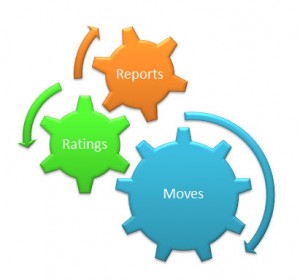 I dare you to try this search! Go to the search engine of your choice and type in…
I dare you to try this search! Go to the search engine of your choice and type in…
CRM “change agent”
Are you surprised how many relevant results you get? There are many similar if not the same names for the process of putting the customer, or in our case the donor, first. Here’s a few:
- Customer Relationship Management (CRM)
- Donor Relationship Management
- Relationship Management System
- Moves Management System
- Prospect Management System
So what’s this about being a change agent? How could anyone reasonably expect CRM software to be a change agent?!
Obviously CRM software is not a magic wand capable of implementing change. But creating or changing your relationship management system is a powerful opportunity to raise the bar in your fundraising efforts. Unfortunately, all too often this opportunity is missed because its role as a change agent is not recognized.
No matter what size your organization and no matter how many people in your fundraising office, any change to your relationship management system is going to affect a number of different players on your team – most potently when it changes performance assessments and incentives.
Following are five tips to help make your relationship management system a successful change agent:
1 – Listen to the key players first.
You are listening for a few critical items: (a) Are you using the same language as the key players? (b) Do your proposed changes match their values? (c) Might any of the proposed changes create undesired consequences? This is Internal Relationship Building 101. Yes, we must do it internally, not just externally with our donors.
2 – Create an internal campaign to sell the changes.
Have fun with this. Go all out. Create simple explanations you can recite in your sleep. Give it a brand and tagline. Use color. No person’s role is too small not to be an advocate of your change. If staff don’t want it or even know what it is, how successful do you think you’ll be?
3- Research suggested performance measures.
Whether you network with your colleagues, read vendor and association research studies, scan for blogs and articles online, or all of the above, do your homework so you can make as few mistakes as possible. Don’t get stuck on research, but don’t be skimpy. If you are recommending a smaller portfolio size, you’d better know the philosophy behind that approach or you may risk raising fewer dollars while you figure it out.
4 – Make sure you have a thoughtful implementation plan.
Why not find a way to test-run some or all of your changes before a full rollout? I’m not talking just the technology – a person should walk through the whole process too. Consider all the phases of your rollout and don’t forget to include training and re-training.
5 – Evaluation means it’s never over.
Your relationship management system will always face two persistent threats: (1) Change in the external fundraising environment such as donor behavior and the economy, and (2) Change in the internal organizational environment, such as changes in leadership and finances. Hopefully you won’t need to make big changes frequently, but if you regularly audit the performance of the system you will be better placed to react.
No matter how big or how small your fundraising office is, your relationship management system is a tool to help you get focused on your donors and prospects. One of the biggest obstacles to achieving success with any technology or system is getting everyone trained and willing to use it.
